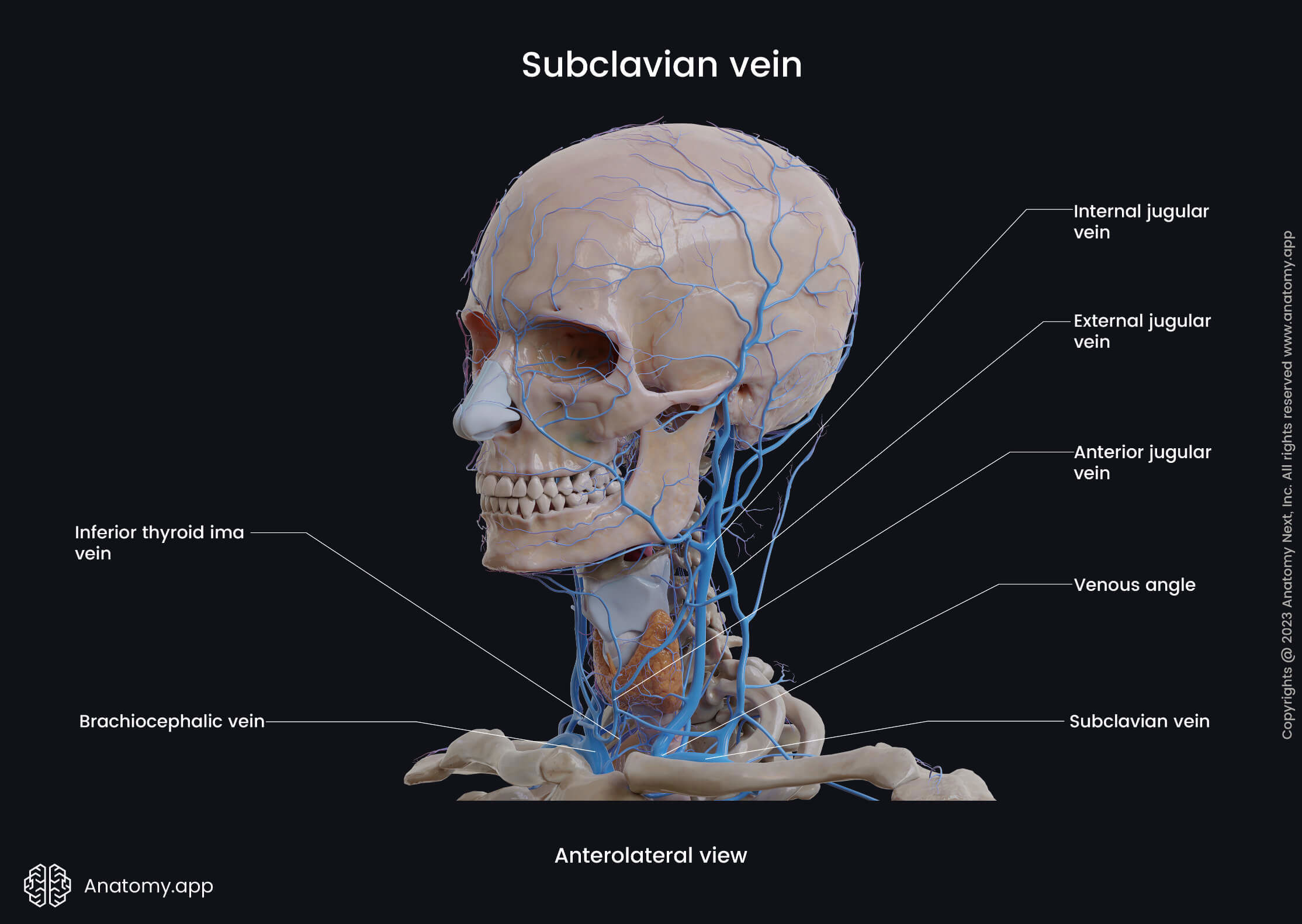- Anatomical terminology
- Skeletal system
- Joints
- Muscles
- Heart
- Blood vessels
- Blood vessels of systemic circulation
- Aorta
- Blood vessels of head and neck
- Arteries of head and neck
- Veins of head and neck
- Blood vessels of upper limb
- Blood vessels of thorax
- Blood vessels of abdomen
- Blood vessels of pelvis and lower limb
- Blood vessels of systemic circulation
- Lymphatic system
- Nervous system
- Respiratory system
- Digestive system
- Urinary system
- Female reproductive system
- Male reproductive system
- Endocrine glands
- Eye
- Ear
Subclavian vein
The subclavian vein (Latin: vena subclavia) is a large blood vessel that arises from the axillary vein. It is one of the deep veins of the neck. The subclavian veins collect deoxygenated blood from the upper extremities and the pectoral (shoulder) girdle.
The subclavian vein originates at the outer border of the first rib. It travels within the subclavian groove of the 1st rib, then runs laterally to the medial border of the anterior scalene muscle. At this point, the subclavian vein joins with the internal jugular vein to form the brachiocephalic vein.
The main tributaries of the subclavian vein are: external jugular vein, dorsal scapular vein, and anterior jugular veins (occasionally). Besides the mentioned vessels, the right subclavian vein receives the right lymphatic duct, and the left subclavian vein receives the thoracic duct.
